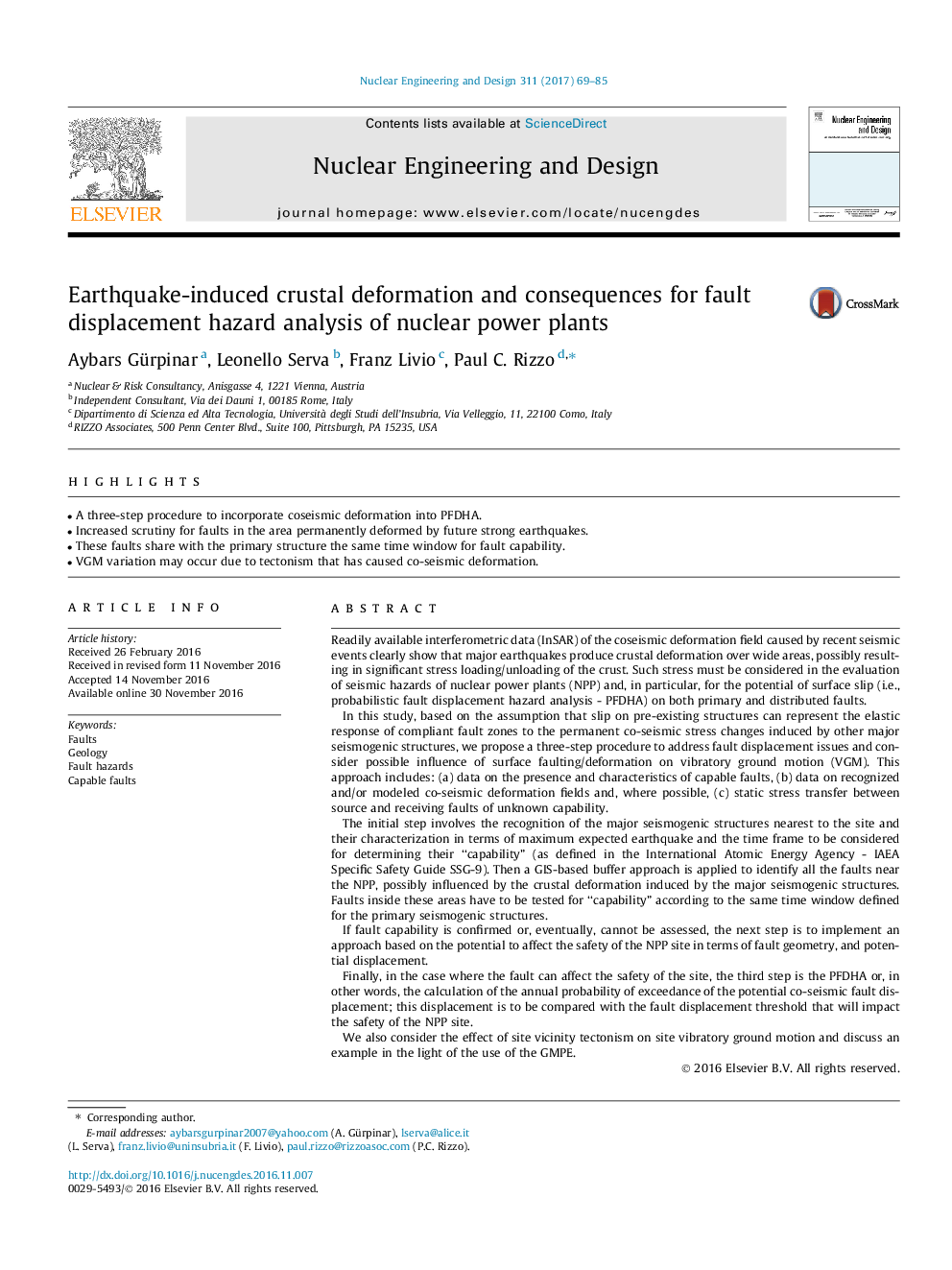| کد مقاله | کد نشریه | سال انتشار | مقاله انگلیسی | نسخه تمام متن |
|---|---|---|---|---|
| 4925732 | 1431410 | 2017 | 17 صفحه PDF | دانلود رایگان |
- A three-step procedure to incorporate coseismic deformation into PFDHA.
- Increased scrutiny for faults in the area permanently deformed by future strong earthquakes.
- These faults share with the primary structure the same time window for fault capability.
- VGM variation may occur due to tectonism that has caused co-seismic deformation.
Readily available interferometric data (InSAR) of the coseismic deformation field caused by recent seismic events clearly show that major earthquakes produce crustal deformation over wide areas, possibly resulting in significant stress loading/unloading of the crust. Such stress must be considered in the evaluation of seismic hazards of nuclear power plants (NPP) and, in particular, for the potential of surface slip (i.e., probabilistic fault displacement hazard analysis - PFDHA) on both primary and distributed faults.In this study, based on the assumption that slip on pre-existing structures can represent the elastic response of compliant fault zones to the permanent co-seismic stress changes induced by other major seismogenic structures, we propose a three-step procedure to address fault displacement issues and consider possible influence of surface faulting/deformation on vibratory ground motion (VGM). This approach includes: (a) data on the presence and characteristics of capable faults, (b) data on recognized and/or modeled co-seismic deformation fields and, where possible, (c) static stress transfer between source and receiving faults of unknown capability.The initial step involves the recognition of the major seismogenic structures nearest to the site and their characterization in terms of maximum expected earthquake and the time frame to be considered for determining their “capability” (as defined in the International Atomic Energy Agency - IAEA Specific Safety Guide SSG-9). Then a GIS-based buffer approach is applied to identify all the faults near the NPP, possibly influenced by the crustal deformation induced by the major seismogenic structures. Faults inside these areas have to be tested for “capability” according to the same time window defined for the primary seismogenic structures.If fault capability is confirmed or, eventually, cannot be assessed, the next step is to implement an approach based on the potential to affect the safety of the NPP site in terms of fault geometry, and potential displacement.Finally, in the case where the fault can affect the safety of the site, the third step is the PFDHA or, in other words, the calculation of the annual probability of exceedance of the potential co-seismic fault displacement; this displacement is to be compared with the fault displacement threshold that will impact the safety of the NPP site.We also consider the effect of site vicinity tectonism on site vibratory ground motion and discuss an example in the light of the use of the GMPE.
Journal: Nuclear Engineering and Design - Volume 311, January 2017, Pages 69-85
